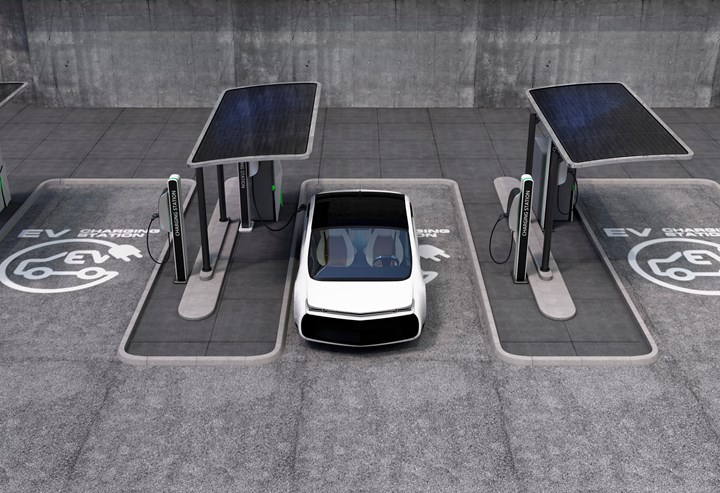Arkema Announces High Voltage Coating Solutions for Electric Vehicles
Arkema has introduced new advanced materials with UL certifications for busbar insulation.

Arkema has announced that it has been granted UL Yellow Card certification for two new polyamide 11 powder coating grades for use in electric vehicle battery systems and other applications. (Rilsan polyamide 11 is a versatile polymer that is 100 percent bio-based, derived from castor oil.)
- Rilsan T Orange 7706 is a primerless fluid bed dipping grade designed to achieve high thickness (500 µm) in one dip.
- Rilsan ESY Orange 7705 is a primerless electrostatic coating grade for components that require thinner insulation.
“The development of these two new polyamide coating grades will allow designers to easily protect their electrical systems in accordance with requirements for hybrid and electric vehicles,” says Jerome Porte, global market manager at Arkema.
Both grades achieved CTI ratings in excess of 600 volts and fire resistance class UL 94 V-0. In addition, the materials are said to offer ease of processing due to their high level of flexibility and ability to be easily masked.
“The new grades were launched to address specific requirements from the H/EV market due to limitations with traditional insulation materials such as epoxies,” adds Porte.
Arkema also offers grades of Kepstan PEKK, an extremely high-performance polymer, for electrical applications requiring temperatures too high for other polymers. Kepstan PEKK will also provide better thermal runaway resistance compared to existing solutions. With melt temperatures in excess of 300°C, the most stringent requirements can be addressed utilizing polyaryletherketones like PEKK. Kepstan PEKK grades offer high polarity that enables excellent adhesion to metal without a primer, a low dielectric constant (2.9) for outstanding insulation, and flexibility of manufacturing options allowing the insulation to be applied via powder coating, extrusion, or overmolding.
Related Content
-
Tin and Tin Zinc Overview and Growth
Brett Larick of Columbia Chemical discusses the increasing demand for conductive finishes driven by the increasing electrification of vehicles.
-
Indonesian Plater Finds Fast Success in Auto Market
This father/son team, inspired by inventor Michael Faraday, focuses on anti-corrosion methods and automated processes to help their Indonesian plating business flourish.
-
Finishing High Reliability, Function Critical Parts
From safety critical automotive and aerospace components to lifesaving medical micro-components and implantable devices, Indiana-based Electro-Spec finishes applications that require zero failure rates.
















